STRAIGHT TALK WITH HR.COM DOL’S NEW PROPOSED RULE FOR INDEPENDENT CONTRACTORS: WHAT EMPLOYERS MUST KNOW - Exclusive interview with Erica Mason, Partner, Labor and Employment Practice, Akerman LLP OCTOBER 2022 • Vol.09 • No.10 (ISSN 2564-2006) 2114 28 35 Workplace Flexibility: What Your Employees Need You To Know Right Now - Jeff Abbott, Ivanti As The FMLA Approaches 30, Is It Showing Its Age? - Marti Cardi, Matrix Absence Management Telecommuting: The Reality Of Employee Expectations - Melvin J. Muskovitz, Dykema Time Is Money: A Quick Wage-Hour Tip - Amy S. Ramsey, Epstein Becker Green

Straight Talk with HR.com DOL’s New Proposed Rule For Independent Contractors: What Employers Must Know - Exclusive interview with Erica Mason, Partner, Labor and Employment Practice, Akerman LLP 07 INDEX On the Cover Workforce Management, Time & Attendance, Excellence OCTOBER 2022 Vol.09 No.10 Articles 25 How HR Investors Are Finding Value Amid Economic Turmoil Navigating through the cultural and logistical obstacles successfully - Saad Siddiqui, General Partner, Telstra Ventures 32 Why A Remote-first Workforce Can Be A Company’s Best Bet Four key areas to address to ensure your remote work approach pays off - Jeanne Cordisco, Chief People Officer, O’Reilly Media 40 Gig Economy: FTC Ramps Up Gig Worker Protections More power to gig workers - Leonard L. Gordon, Alexandra Megaris and Michael Munoz, Veneble LLP (ISSN 2564-2006) 17 Top HR Analytics Predictions For 2023: Part I 8 predictions from people leaders - Brett Farmiloe, Founder and CEO, Terkel.io 10 From Labor Unions to Hybrid Work: Staying Compliant During America's Workforce Evolution - Jim McGeady, Head, Product Marketing, ADP Workforce Management and Data Solutions businesses Sponsored Content
Workplace Flexibility: What Your Employees Need You To Know Right Now
Employees are fast embracing ‘Everywhere Work’
- Jeff Abbott, CEO, Ivanti
As The FMLA Approaches

30, Is It Showing Its Age? “When you're 30 you're old enough to know better, but young enough to go and do it.” Bridget Bardot
- Marti Cardi, Vice President – Product Compliance, Matrix Absence Management
Telecommuting: The Reality Of Employee Expectations

Employers need to form right policies to address legal issues that can arise with a remote workforce
Melvin J. Muskovitz, Senior Counsel, Dykema
Time Is Money: A Quick Wage-Hour Tip
Avoiding common California wage and hour mistakes
- Amy S. Ramsey, Employment Litigation Attorney, Epstein Becker Green

Top Picks 14 21 28 35
INDEX
How are
Management Products and
helping to make you smarter?
Workforce Management Excellence - Monthly Interactive Learning Journal
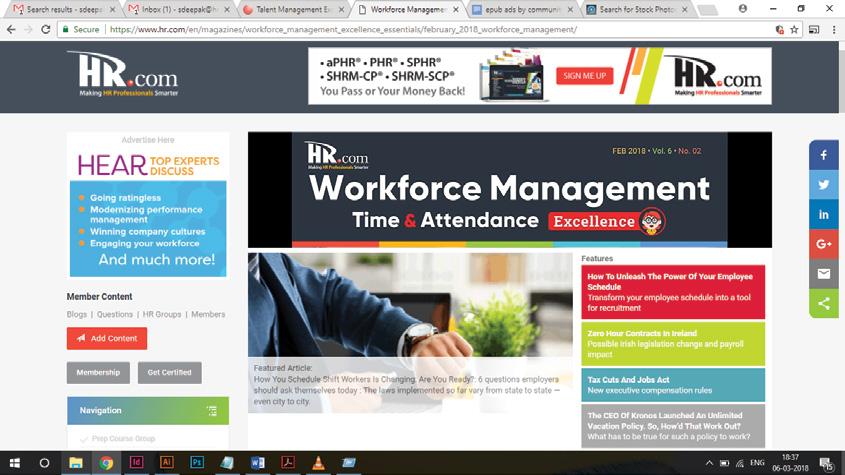
This monthly interactive learning experience showcases activities, processes, and tools needed to manage a workforce.
Workforce Management Webcasts for Credit

Workforce Management Virtual Events
Virtual Events in the Workforce Management encompasses all the activities, processes, and tools needed to manage a workforce. A comprehensive WFM system includes planning, forecasting, scheduling, and tracking workers to optimize the balance of customer, employee, labour laws and organizational needs. Be informed and understand the latest WFM trends through Workforce Management Virtual Events. Each Virtual Event consists of up to 10 credit webcasts.
HR.com webcasts deliver the latest Workforce Management industry news, research trends, best practices and case studies directly to your desktop. Webcasts are available live online with a downloadable podcast and a copy of the slides (PDF) available before and after each webcast. Earn all of the required recertification credits for aPHR, PHR, SPHR, GPHR, and SHRM Certifications. HR.com’s one-hour webcasts, in every HR specialty including HRIS and Payroll, are pre-approved for HRCI and SHRM credit (excluding Demo webcasts).
Workforce Management Community
Join almost 21,700 HR.com members with a similar interest and focus on rewards and recognition. Share content and download research reports, blogs, and articles, network, and “follow” peers and have them “follow” you in a social network platform to communicate regularly and stay on top of the latest updates. This well established Workforce Management Community is an invaluable resource for any HR professional or manager.
our Workforce
Services
Use these invaluable Workforce Management resources today! For more information phone: 1.877.472.6648 | email: sales@hr.com | www.hr.com
Debbie Mcgrath Publisher, HR.com
Deepa Damodaran Editor, Workforce Management, Time & Attendance, Excellence


Debate
In a recent announcement, the U.S. Department of Labor unveiled a new proposed rule that revises its guidelines for categorizing employees or independent contractors under the Fair Labor Standards Act.
What is the significance of this proposed rule? How would it impact the business world? What should employers do to maintain compliance with the new proposed rule? There are many questions that employers need to find answers to.
Check out the exclusive interview, DOL’s New Proposed Rule For Independent Contractors: What Employers Must Know, featured on the cover this month, where Erica Mason (Partner Labor and Employment Practice, Akerman LLP) touches upon the legal concerns that this rule presents for employers and the best practices for navigating them, among others.
As organizations around the globe—from banks and retailers to manufacturers and educational institutions —are reckoning with the permanent transition to remote and hybrid work, they understand that old strategies no longer cut it.
Today, employees prefer an ‘Everywhere Workplace’. It is not a one-size-fitsall operation, rather is experienced differently by everyone. Learn more about this in Ivanti CEO Jeff Abbott's Workplace Flexibility: What Your
Employees Need You To Know Right Now, where he delves into the changing realities in workplaces and how employers must embrace them with the right strategy.
The FMLA Approaches 30, Is It Showing Its Age? In an interesting read, Matrix Absence Management's Marti Cardi tells us why and how FMLA must evolve to avoid losing its relevance as the years pass.
In Telecommuting: The Reality Of Employee Expectations, Dykema's Melvin J. Muskovitz discusses the policies employers need to form to address legal issues that can arise with a remote workforce.
Also, read Amy S. Ramsey's Time Is Money: A Quick Wage-Hour Tip
This is not all!
This month’s issue of Workforce Management,
Attendance, Excellence
several other
articles that we hope will help you achieve excellence
and
in your workforce
efforts.
Happy Reading!
Disclaimer: The views, information, or opinions expressed in the Excellence ePublications are solely those of the authors and do not necessarily represent those of HR.com and its employees. Under no circumstances shall HR.com or its partners or affiliates be responsible or liable for any indirect or incidental damages arising out of these opinions and content.
EDITOR’S NOTE
Time &
brings you
informative
educational
and efficiency
management
Subscribe now for $99 / year And get this magazine delivered to your inbox every month Become a Member Today to get it FREE! SIGN UP OR For Advertising Opportunities, email: sales@hr.com Copyright © 2022 HR.com. No part of this publication may be reproduced or transmitted in any form without written permission from the publisher. Quotations must be credited. Editorial Purpose Our mission is to promote personal and professional development based on constructive values, sound ethics, and timeless principles. Excellence Publications Debbie McGrath CEO, HR.com - Publisher Dawn Jeffers VP, Sales Sue Kelley Director (Product, Marketing, and Research) Babitha Balakrishnan and Deepa Damodaran Excellence Publications Managers and Editors Deepak S Senior - Design and Layout Workforce Management, Time & Attendance, Excellence Team Deepa Damodaran, Editor Raksha Sanjay Nag, Junior Editor Nataraj Ramesh Design and Layout (Digital Magazine) Chandra Shekar Magazine (Online Version) Submissions & Correspondence Please send any correspondence, articles, letters to the editor, and requests to reprint, republish, or excerpt articles to ePubEditors@hr.com For customer service, or information on products and services, call 1-877-472-6648 Workforce Management, Time & Attendance, Excellence (ISSN 2564-2006) is published monthly by HR.com Limited, 56 Malone Road, Jacksons Point, Ontario L0E 1L0 Internet Address: www.hr.com Write to the Editor at ePubEditors@hr.com Contractor vs. Employers: The Never-Ending
In a world of unparalleled challenges (global pandemic, racial injustice, polit ical rivalry, digital 4.0, emotional malaise), uncertainty reigns. Finding oppor tunity in this context requires harnessing uncertainty and harnessing starts with reliable, valid, timely, and useful information. The Excellence publica tions are a superb source of such information. The authors provide insights with impact that will guide thought and action.
Dave Ulrich
Rensis Likert Professor, Ross School of Business, University of Michigan Partner, The RBL Group

Excellence publications are my ‘go-to’ resource for contemporary and action able information to improve leadership, engagement, results, and retention.
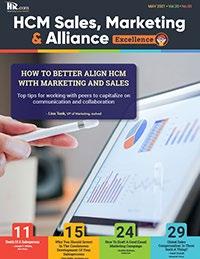

Each edition offers rich and diverse perspectives for improving the employee experience and the workplace in general.
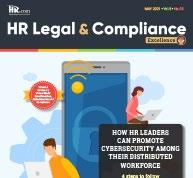
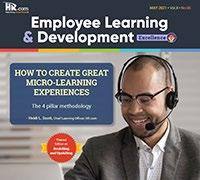

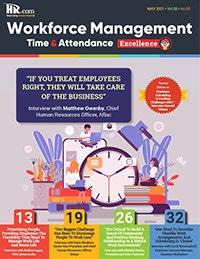
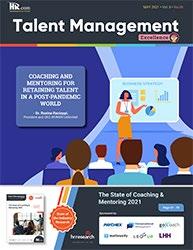
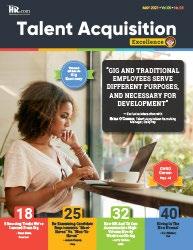
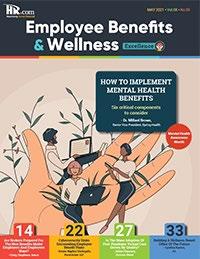
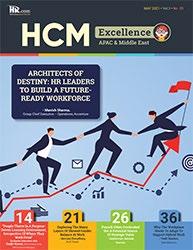


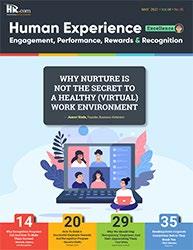
Julie Winkle Giulioni
Author, Virtual /Live Keynote Presenter, Inc.’s Top 100 Leadership Speakers

I regularly read and contribute to Leadership Excellence and Talent Man agement Excellence. I use many of the articles I read to augment my own presentations and I often share the articles with my clients. They are always quick, right on target for the latest issues in my field, and appreciated by my clients. If you want to stay up to date on the latest HR trends, choose a few of the different issues from the Excellence series of publications.
Dr. Beverly Kaye
CEO, BevKaye&Co.

We’re eager to hear your feedback on our magazines. Let us know your thoughts at ePubEditors@hr.com WHY EXCELLENCE PUBLICATIONS?
DOL’s New Proposed Rule For Independent Contractors: What Employers Must Know
The U.S. Department of Labor (DOL) recently unveiled a new proposed rule which revises the agency’s guidelines for categorizing employees or independent contractors under the Fair Labor Standards Act (FLSA).
In an exclusive interview with HR.com, Erica Mason, Partner in the labor and employment practice at Akerman LLP, touches upon the legal concerns that this rule presents for employers and the best practices for navigating them, and more.

Excerpts from the interview:
Q.What is the significance of the U.S. Department of Labor's new proposed rule for independent contractors?
Erica: The US DOL has issued a new proposed rule that will significantly impact how employers will evaluate individuals employed as independent contractors under the Fair Labor Standards Act (FLSA). Notably, this is the Biden Administration’s second attempt to undo the Trump Administration’s prior rule on the same issue, which made it easier for employers to classify workers as independent contractors.
Both the current and proposed rules are intended to provide employers with clarity regarding, but not alter, the six-factor “economic realities” test, which federal courts and the DOL have used for decades to determine whether an individual is in business for themselves or an employee of the company.
Current DOL leadership claims that the prior rule leaves workers vulnerable to misclassification, which can negatively impact their compensation and benefits. Business advocates argue that this new rule may negatively impact job creation and provides less flexibility to companies and individuals to transact in the “gig economy,” an economy that the FLSA, originally enacted in 1938, could never have contemplated.
Straight Talk with HR.com
Exclusive interview with Erica Mason, Partner, Labor and Employment Practice, Akerman LLP
COVER Workforce Management, Time & Attendance, Excellence presented by HR.com OCTOBER 2022 7 Submit Your Articles
What would be its impact on the business world?
Erica: Under the FLSA, employees are entitled minimum wage, overtime pay and contributions to Social Security and Medicare (FICA contributions). Although independent contractors must cover the full cost of their FICA contributions, they generally have more flexibility to negotiate their compensation and schedules, and work for multiple companies at the same time.
Practically speaking, because this rule will reduce the number of individuals who can maintain independent contractors classification, this new rule will cause employer overhead and staffing costs to skyrocket, particularly for those companies and industries that rely heavily on independent contractors, such as rideshare companies (Uber, Lyft, etc.), construction companies, and even financial services and insurance companies.
Q.
What are the new parameters of the new proposed rule regarding categorizing employees or independent contractors under FLSA?
Erica: Previously, the six factors of the “economic realities test” were meant to be “balanced” with “no one factor predominating over another. The vague nature of this formula leads to varying results across the federal district courts, and in many cases, contradictory case decisions within, and amongst, circuits
Under the current rule, two of the five factors are given more weight than the other four: (1) the worker's level of control over their work; and (2) the worker’s ability to profit from their position with personal investment. The proposed rule change under Biden's Department of Labor would also consider investments by the employee and employer, the skill displayed by the employee, the permanence of the working relationship, and the degree to which the worker performs a function that is integral to the business.
Straight Talk with HR.com
Q.
Workforce Management, Time & Attendance, Excellence presented by HR.com OCTOBER 2022 8 Submit Your Articles
What are the legal concerns employers should be aware of in the context of the revised rule?
Erica: In 2021, the DOL collected over $200 million in back wages for nearly 200,000 employees, who it determined employers had not paid in accordance with the FLSA— many of which involved independent contractor misclassification. Even more is collected through private independent contractor misclassification lawsuits, with an estimated 6,000 lawsuits filed each year in federal courts throughout the country, resulting in hundreds of millions of dollars in FLSA settlements each year.
Plaintiffs’ attorneys seek out these claims because once a violation has been established, the FLSA affords liquidated (double) and in some cases treble damages, and a full recovery of all reasonable attorneys fees and costs
Given the prevalence, and high stakes nature of FLSA misclassification cases, employers should be very concerned about running afoul of the FLSA under the new proposed independent contractor rule.

Q.
How should employers maintain compliance with the new rule?
Erica: An ounce of prevention is worth a pound of cure. Given the high-stakes nature of litigation of FLSA misclassification, employers should immediately review any workers, who are classified as independent contractors under the new proposed rule, to determine if they should be reclassified as employees.
Would you like to comment?
Straight Talk with HR.com
Q. Workforce Management, Time & Attendance, Excellence presented by HR.com OCTOBER 2022 9 Submit Your Articles
From Labor Unions to Hybrid Work: Staying Compliant During America's Workforce Evolution
By Jim McGeady, ADP
As American workers and their employers forge new paths, we look back at past inflection points in our workforce's rich history and share how organizations can use technology to not only simplify compliance, but also improve employee satisfaction.
While examining the history of working in America, we see how current worker benefits, such as overtime pay, paid time off, family leave, pay equality, safe working conditions and restrictions around child labor were won in part by employee unionization, much of which took place alongside American industrialization.
Today, the country's workforce is at yet another crossroads following the “great resignation" and the meteoric rise in remote, hybrid and other flexible work options. As employers navigate these new waters during a historic labor shortage, their relationships with various types of workers must evolve, if they wish to remain competitive and foster a productive work culture.
At the same time, they must also maintain compliance as they determine how to best move their workforce forward.
During times of change, we can look to the past for lessons that help us shape the future. We must also explore how today's technology can best support necessary changes. Here is a brief look at how employees and laws have impacted employers and ways organizations can manage compliance as a strategy for attracting and retaining labor.
Built upon 140 Years of History — Labor Unions Today
During a period when workers averaged 60 working hours per week, labor unions originated as a way for them to show solidarity while fighting for shorter workdays and more paid time off. Today, millions of workers maintain membership in unions.
Recently, employee unionization efforts at several high-profile businesses have made headlines, and younger workers are seeing the benefits of unionization. A Bureau of Labor Statistics report shows that 15.8 million wage and salary workers were represented by unions in 2021. Additionally, the data shows that 75% of people who joined a labor union in 2017 were younger than 35.
Workforce Management, Time & Attendance, Excellence presented by HR.com OCTOBER 2022 10 Submit Your Articles SPONSORED CONTENT
Unions have played a significant role in establishing many laws, the most significant of which are the Fair Labor Standards Act (FLSA) of 1938, the Family Medical Leave Act (FMLA), a minimum wage mandate, extra pay for overtime work and basic child labor laws. Laws like these were preceded by the series of programs and projects President Franklin D. Roosevelt instituted, collectively called The New Deal (1933-1934) and The Second New Deal (1935-1936).
Worker Rights and Compliance Challenges



As industrialization in the United States progressed, national labor organizations were formed to advocate for regulations. These organizations' collective bargaining power contributed to the creation of the Department of Labor by Congress, primarily to administer labor laws guaranteeing the right to safe, fair and healthy working conditions.
Put in place during the Great Depression to provide jobs and stabilize the economy, Roosevelt's programs set a precedent for politics, workers and employers for decades to come. Thanks to these laws, employers and governing bodies receive clear guidelines for creating a safe workplace. Over time, this has allowed workers to reduce their need for and reliance on unions.
Whether it is compliance with wage and hours laws or specific union agreements, employers must have processes in place to simplify education and












administration. Those that do not could face financial penalties, employee grievances and attrition.
Compliance challenges include:































1. The tracking and payment of overtime Calculating hours and applying the law accurately, so that regular and overtime rates can be determined and applied.


2. Time off and family leave Tracking entitlement and accrued benefits, including meal and rest breaks, sick time, vacation time and holidays.
3. Child labor Limitations and safety regulations so that when children do work, they are given certain protections and are held to a specific set of standards.
4. Wage standards and equal pay To ensure living wages for a wide variety of jobs and working to implement fair and equal wages.
5. Safety and working conditions Labor unions dedicate significant resources to monitoring and improving workplace safety and health conditions.
How Technology Can Aid Compliance











Balancing the needs of the workforce with the needs of an organization is always a challenge, but it is especially difficult when it comes to aspects of employment that fall under compliance restrictions for laws and regulations. Employers must maintain a large amount of documentation and meet high standards for accuracy and integrity within that documentation.

From Labor Unions to Hybrid Work: Staying Compliant During America's Workforce Evolution
Workforce Management, Time & Attendance, Excellence presented by HR.com OCTOBER 2022 11 Submit Your Articles
Fortunately, workforce management technology is available to help employers monitor and stay on top of compliance with tools, such as:
● Rules engines that allow businesses to tie pay and wage rules to specific worker populations, such as overtime pay to non-exempt employees.
● Work rules that track warnings and violations and deploy soft and hard blocking of schedule violations.
● Data collection that allows businesses to capture punches from the source (mobile, clocks, etc.) for accurate records and calculations.
● Digital audit trails, approvals and attestations that allow businesses to maintain accurate time edits and record-keeping.
● Accrued time off accounting that enables organizations to calculate earnings and usage of both paid and unpaid time off.
● Attendance policy management that makes it easier for businesses to track instances of events like unplanned absences and tardiness and take disciplinary actions.
● Leave case management that supports easy management of workflow and documentation for intermittent and continuous leave cases.
Through these tools, workforce management technology solutions can help simplify compliance by removing subjectivity from the data collection and storage process and making it easy to capture proof in record-keeping when needed. By streamlining these functions, employees are protected and, in turn, happier.
Turning Compliance into an Advantage
Organizations with sound compliance management can more easily enjoy good relationships with workers and their unions, leading to benefits, such as:
● Reduced employee turnover Research has long shown that unionized workers are more likely to remain in their jobs. In a recent study, union members were found to have significantly higher levels of job satisfaction than non-members.
● Lower hiring and training expenses When businesses experience less turnover due to unionization, they spend less on hiring, recruiting and onboarding new workers. Organizations can benefit from significant cost savings in increasing their retention rates.
● Increased productivity Data from the last decade shows that union organizations led to a 24% increase in manufacturing and a 38% increase in the construction sector.
● Access to a highly skilled talent pool. Many unions offer their members a wide range of skills development training programs, apprentice programs and labor management partnerships that provide unique opportunities to develop in-demand skills.
With the help of technology, compliance can be turned into an advantage that helps companies create a safe and fair workplace Workforce management technology can help companies maintain accurate records, analyze workforce data and ensure their compliance requirements are in order.
This story was originally published on SPARK, a blog designed for you and your people by ADP® Jim McGeady is the Head of Product Marketing for the ADP Workforce Management and Data Solutions businesses. He has over 25 years of experience helping clients drive results through the optimal management of their people. Jim has been a leader in strategy, marketing and product management with business software innovators including ADP, UKG, Symplr, Infor and IBM. Would you like to comment?
 From Labor Unions to Hybrid Work: Staying Compliant During America's Workforce Evolution
From Labor Unions to Hybrid Work: Staying Compliant During America's Workforce Evolution
Workforce Management, Time & Attendance, Excellence presented by HR.com OCTOBER 2022 12 Submit Your Articles

Workplace Flexibility: What Your Employees Need You To Know Right Now
Employees are fast embracing ‘Everywhere Work’
By Jeff Abbott, Ivanti
If you had to choose between these two perks, which one would you pick?
Option A: The flexibility to work from anywhere you want.
Option B: Get a promotion.
Knowledge workers have already made their preferences clear. More than seven in ten would choose option A, according to a recent survey from Ivanti.
It is no secret that employees are embracing ‘Everywhere Work’, but stats like this reveal just how strongly they feel about flexibility.
As a leader, even if you are generally on board with enabling a remote-first work structure, that does not mean it is easy to implement and manage. Especially when your entire infrastructure is built for on-site work, not permanent remote work.
Organizations around the globe—from banks and retailers to manufacturers and educational institutions —are reckoning with the permanent transition to remote and hybrid work. Leaders know that old strategies no longer cut it. Those who resisted evolving—convinced that they just had to
“hang on until things go back to normal”—have found out the hard way that “normal” is forever different. (I will avoid using the term “new normal.” You are welcome.)
The ‘Everywhere Workplace’ is not a one-size-fits-all operation. It is experienced differently by everyone, which is perhaps the most important point to understand. And yet, statistics do tell an illuminating story that every busy business leader would do well to take note of. The 2022 Everywhere Workplace Report, canvassing the opinions of thousands of professionals across several countries, reveals several surprising and actionable trends.
Here is a highlight reel:
1. Remote Doesn’t Mean Working from a Static Place
There has been a sharp uptick in people identifying as “digital nomads,” meaning they are not simply working from home, but prefer to work from everywhere as free-ranging travelers. That means it is not enough to support a secure home office: access must be enabled and secured everywhere. In 2018, 4.8 million people identified as digital nomads. By 2021, that number was 15.5 million.
TOP PICK Workforce Management, Time & Attendance, Excellence presented by HR.com OCTOBER 2022 14 Submit Your Articles
2. In the ‘Age of Employee’, the Future Is Flexible
The ‘Everywhere Workplace’ truly means everywhere— not just full-time remote work. 42% find a hybrid work policy most appealing. That means flexibility is key. We have seen employee movements like “quiet quitting” in the U.S. and “lying flat” in China—these are notions of a generational management failure in providing flexibility.
With leadership priorities in the right place, a workforce will not silently give up. In fact, it will raise its collective commitment to company success. We are in the ‘Age of the Employee’ and a great employee experience should be a C-level priority for organizations everywhere. It is critical that leadership encourages employees to set healthy boundaries and find time to step away from the ‘Everywhere Workplace’ to recharge, making flexibility an integral culture from the top to bottom in the company.
3. Enabling Remote Work Isn’t Enough

Not only do organizations need to consider flexibility in the ‘Everywhere Workplace’, but the quality of that digital experience makes all the difference. New research suggests that digital employee experience
(DEX) is a major factor in loyalty, satisfaction and productivity. Four out of five employees are required to use multiple, often conflicting, apps and systems to get their work done, which inhibits productivity and is frustrating—to say the least. DEX covers the whole employee lifecycle, from onboarding (which has shifted massively in the ‘Everywhere Workplace’) through recognition, feedback, access, communication, milestones… the list goes on.
4. There’s a Serious Gender Divide
Fifty one percent report that they have not been negatively affected by remote work, but it is not a universal experience. Women have been three times more likely than men to be their children’s main caregiver during the pandemic, and while work/life balance was cited as a benefit of remote work for many, being home – and being expected to also care for children – has been a serious concern for women in particular.
Employers can help by understanding their people as not just workers, but also individuals with full lives, and offer support that may include flexible hours and/or childcare stipends.
Workplace Flexibility: What Your Employees Need You To Know Right Now
Workforce Management, Time & Attendance, Excellence presented by HR.com OCTOBER 2022 15 Submit Your Articles
5. The Great Resignation Isn’t Over
While people quit jobs at a record pace during the peak years of the pandemic, more plan to quit— especially if they are not able to work when and how they want. And it is a self-fulfilling prophecy: the huge numbers of open roles mean that people have more options than ever before, and the rise of remote work mean they are not limited to local opportunities.
Employers must rethink how they attract, retain, and engage top talent. In fact, recent statistics from the U.S. Bureau of Labor Statistics show that the Great Resignation is still in full effect, with Americans continuing to quit at record rates despite fewer job openings.
6. The Future of Work Hinges on IT
Responses from IT workers were split out from non-IT office workers to identify trends, and it is clear that IT is particularly understaffed (with a global shortage estimated at 2.7 million workers) and burned out.
And yet, IT is critical to enabling a secure, productive ‘Everywhere Workplace’. That’s a theoretical catch-22, but it does not have to be. Accelerating automation and digital transformation can relieve the burden on IT while helping to ensure that people, data, networks, and applications are seamless and secure.
The temporary solutions that got the business world through the last two years must give way to
the future of work. That means being proactive and intentional in what we do next. Business leaders and IT face a monumental challenge: How to create a secure, engaged ‘Everywhere Workplace’.

Employees need the right tools—and the right flexibility—to work securely from anywhere at any time. Leaders must understand the nuanced challenges facing individuals and acknowledge that not everyone experiences the ‘Everywhere Workplace’ the same way. As much of the world scrambles for top talent, it is becoming increasingly clear that the ‘Everywhere Workplace’ must continue to evolve to meet the expectations of employees.
Jeff Abbott is the CEO of Ivanti. Jeff has more than 25 years of experience working for large software and services companies, including Accenture, Oracle, and Infor. Jeff has led the company through several recent acquisitions, including Pulse Secure, MobileIron, Cherwell, and most recently RiskSense.

Would you like to comment?
Workplace Flexibility: What Your Employees Need You To Know Right Now Workforce Management, Time & Attendance, Excellence presented by HR.com OCTOBER 2022 16 Submit Your Articles
Top HR Analytics Predictions For 2023: Part I
predictions from people leaders
By Brett Farmiloe, Terkel.io
what do
predict will be a
trend in 2023 and why?
best anticipate the trends in
in 2023, we asked HR and people managers and business leaders this question for their best insights. There are several predictions about the role people analytics would play in managing the workforce in 2023 that would help HR and related
advantage of the moment to shape their
1. Analytics Focusing on Data Governance
I believe that one of the top people analytics trends in 2023 will be a focus on data gover nance. As organizations increasingly collect and store data about their employees, there will be a greater need to establish clear policies and pro cedures for managing this information.
This will help ensure that data is used respon sibly and accurately, and that employees' priva cy rights are protected. Data governance also includes developing plans for how data should be used, shared, and disposed of. With the right policies in place, people analytics can help orga nizations to better understand and manage their workforce.
Antreas Koutis, Administrative Manager, Financer

HR leaders,
you
top people analytics
To help you
people analytics
teams take
approach and response to employee issues. Here are 8 predictions these leaders made about people analytics trends in 2023: 1. Analytics Focusing on Data Governance 2. Going Deeper into Employee Net Promoter Score 3. Measuring the Employee Experience 4. The Emergence of the People Experience Officer 5. Focus on Performance Management 6. Measuring the Impact of Culture on Employee Engagement and Retention 7. Using Data to Identify Potential Issues Relating to Employee Satisfaction 8. Use of Social Media Data in People Analytics 8
Workforce Management, Time & Attendance, Excellence presented by HR.com OCTOBER 2022 17 Submit Your Articles
2. Going Deeper into Employee Net Promoter Score
Employee net promoter score is a crucial people analytics statistic, but I predict in 2023 that HR and executive leadership will want to understand their eNPS by managers. Knowing the eNPS for your entire company is helpful, but does not help you identify where there are risks or opportunities for improvement.
I expect organizations in 2023 to look at eNPS at a more granular level, particularly by manager or department, so that they can make specific ad justments to improve engagement and retention.
Logan Mallory, Vice President of Marketing, Motivosity



4. Measuring the Impact of Culture on Employee Engagement and Retention
Predictions are difficult, especially about the future, as the saying goes. But that will not stop me from taking a crack at it. I predict that the top people analytics trend in 2023 will be a focus on culture. By that I mean organizations will place a greater emphasis on understanding and mea suring the impact of their culture on employee en gagement, retention, and performance. This trend has been building for some time, and I believe it will come to a head in 2023.
The reason is simple: culture is the X-factor that is often overlooked in people analytics, but can have a profound impact on organizational success. When you couple this with the increas ing availability of data and advances in AI and machine learning, you have a recipe for success. So, while I can not say for certain what the future holds, I am reasonably confident that culture will be a top people analytics trend in 2023.
3. Measuring Employee Experience
Having a great way to measure how the effec tiveness of recruitment means little if you are not able to keep them there after they are hired, and this is why measuring employee experience will be an HR analytic trend. The pandemic and the Great Resignation reshaped priorities and acted as a massive wake-up call to businesses about the importance of maintaining a quality employee experience.
Analytics will be designed and used to measure everything that affects the employee experience from the physical workspace, to technology, to company culture. The benefit of this will not only be displayed in improved retention rates, but also in higher productivity.
As the competition to hire and retain talent in tensifies, the emphasis on analytics that demon strate key factors in the employee experience will remain at the forefront and will continue to be an HR trend well into the future.
Cody Candee, Founder and CEO, Bounce
5. Focus on Performance Management
Assessing performance will be vital for people analytics this 2023. This comes after prioritizing productivity and engagement since the Covid-19 pandemic occurred. Considering the effects of hybrid and remote work models, flexibility, and the use of digital tools, organizations will rely on factual data to make informed judgments in evaluating employees' work.
By determining important metrics employees should reach, performance management could help organizations discover the best variables to focus on for further success.
Travis Lindemoen, Managing Director, nexus IT group
Abe Breuer, CEO, VIP To Go

Top HR Analytics Predictions For 2023: Part I
Workforce Management, Time & Attendance, Excellence presented by HR.com OCTOBER 2022 18 Submit Your Articles
6. Emergence of People Experience Officer
In 2023, we will see the emergence of ‘People Experience’ role in HR as employers look to get a handle on retention. That is all related back to getting smarter about "people analytics." In addi tion to absenteeism data, performance reviews and establishing SMART goals, People Experi ence officers will no doubt focus on the engage ment data with new hires as well as the insightful (but usually overlooked due to bandwidth) data revealed in exit interviews.
For example, how well are employees responding to onboarding and training? How engaged are they with the benefits selection process? These are early signs of employee happiness. What per centage of employees mention a lack of flexibili ty, vacation time or competitive salary in the exit interviews, are they leaving for better benefits?
All of this data is important to retaining employ ees and improving the experience in the future. If competition for talent remains at this level in 2023 we are all going to be paying much more attention to data.
7. Using Data to Identify Potential Issues Relating to Employee Satisfaction
As we move into the new year, HR leaders are looking to the future to predict what the top peo ple analytics trend will be in 2023. One example is the use of data to identify potential employee engagement issues. By analyzing data on absen teeism, job satisfaction, and turnover rates, HR leaders can better understand where employees are most likely to disengage. This information can then help implement targeted interventions to improve employee engagement and retention.

Another trend likely to gain traction in 2023 is the use of machine learning to automate repetitive HR tasks. By freeing up HR professionals from these mundane tasks, they will be able to focus on more strategic initiatives that can have a greater impact on the organization.
Tracey Beveridge, HR Director, Personnel Checks
Heather Smith, CPO and Senior Account Executive, Flimp Communications


Top HR Analytics Predictions For 2023: Part I Workforce Management, Time & Attendance, Excellence presented by HR.com OCTOBER 2022 19 Submit Your Articles
8. Use of Social Media Data in People
Analytics
A trend that we see gaining momentum is the use of social media data in people analytics. As more and more organizations realize the power of social media for recruiting, retention, and engage ment, they will start to collect and analyze social media data to gain insights into their employees. We also believe that people analytics will become more democratized in the coming years.
In the past, people analytics has been largely the domain of HR professionals and senior leaders. However, we predict that people analytics will be come more accessible to all employees, regard less of their role within an organization. This will allow everyone to have a greater impact on the decisions that are made about them at work.
 Linda Shaffer, Chief People Operations Officer, Checkr
Linda Shaffer, Chief People Operations Officer, Checkr

Brett Farmiloe is the Founder and CEO – and currently CHRO - of Terkel.io. Brett is an SHRM Influnecer and has also been a keynote speaker at several state SHRM conferences around the topic of employee engagement.

Would you like to comment?
Top HR Analytics Predictions For 2023: Part I Workforce Management, Time & Attendance, Excellence presented by HR.com OCTOBER 2022 20 Submit Your Articles
As The FMLA Approaches 30, Is It Showing Its Age?
By Marti Cardi, Matrix Absence Management
This coming February marks the 30th anniversary of the Family and Medical Leave Act (FMLA). Over the past 29 years, FMLA has had a significant impact on providing employees

unpaid job protection so they can take leave to deal with personal and family issues.
While it has been a game-changer for workers, businesses, and our
society, as FMLA approaches 30 it is an opportunity to take stock and assess - see if it can adapt to our ever-changing workplace.
“When you’re 30 you’re old enough to know better, but young enough to go and do it.” Bridget Bardot
TOP PICK Workforce Management, Time & Attendance, Excellence presented by HR.com OCTOBER 2022 21 Submit Your Articles
Since its enactment in 1993, FMLA has provided up to 12 weeks of job-protected leave of absence per year for an employee to care for a serious health condition impacting the employee or a family member, bonding with a new child, and tending to matters related to a family member’s active-duty deployment.

The law and corresponding regulations have gone through two major revisions since then, but no major changes have been made in more than 10 years. Yet, spurred on by technology, a changing workforce, new state leave laws and of course a pandemic, there has been a dramatic evolution in how, where and when we work. And these changes have led to legitimate questions as to how to apply FMLA.
These include fundamental definitions of key components of FMLA. For example, a “family” is much different today than it was 30 years ago. As a result, increasing numbers of employees have caregiver responsibilities –children, elderly parents, siblings and their children and others. The legal protections outside of the FMLA for caregiver employees are broad and numerous and growing every year. While some employers have implemented family-friendly policies and benefits to assist employees dealing with caregiver responsibilities, there remain significant administrative challenges and questions for both employers and employees on how to properly apply FMLA to a growing list of potential family members.
Similarly, there are questions about what constitutes a serious
health condition. Generally, cosmetic surgery is excluded, but what if such surgery uncovers a serious illness or is part of treatment and/or recovery? And many employers erroneously read the exclusion to apply to any elective procedure even though the FMLA has no such limitation. While no law can ever provide a comprehensive list of health conditions, greater guidance beyond one-off litigation is necessary to provide clarity.
Likewise, the changing nature of how and when an employee works has clouded application of the FMLA. Questions abound regarding how to properly calculate a work week and determine the leave entitlement for an employee working remotely with no set hourly schedule – a situation far more common today than before March 2020.
As The FMLA Approaches 30, Is It Showing Its Age?
Workforce Management, Time & Attendance, Excellence presented by HR.com OCTOBER 2022 22 Submit Your Articles
Thirty years later there even remains confusion on the process to properly certify a leave request. For example, when is an employer justified in requiring a second (or third) opinion to confirm the validity of the health care provider’s original certification –the term “validity” is never defined in the regulations! Moreover, the regulations hint but never state that an employer can request a second opinion only prior to the initial approval of leave, and then not again until the annual certification.
While FMLA provides job protection for medical leave, it doesn’t require that leave to be paid. Every year for the past several, federal paid leave laws are proposed in Congress. However, despite favorable popular opinion, the passage of a national paid leave law remains elusive for a number of reasons, and prospects remain bleak in the foreseeable future. In the meantime, states, municipalities, and corporations have stepped into the breach to provide paid medical and family leave laws and policies. While this certainly benefits employees and families in a covered jurisdiction, it has created a tangled web of confusing and conflicting regulations for many employers.
In fact, in some cases, state laws can actually undermine FMLA as they may provide more flexibility to workers to take paid leave for reasons or durations that supersede those covered by FMLA. For example, many state leave laws include “safe leave”
when the employee or a family member is the victim of domestic violence and allow an employee to take leave to care for a broader spectrum of family members than the FMLA’s parent, child, or spouse. Ultimately, FMLA is not a choice – it is a law that must be followed by both employer and employee to assure protection.

Despite favorable popular opinion, the passage of a national paid leave law remains elusive for a number of reasons, and prospects remain bleak in the foreseeable future.
hints at how to administer FMLA properly overall.
No law is perfect, and it is unlikely that any updates to FMLA or its regulations, whether providing for paid leave or not, will answer every question and clarify every issue. But without legislation or regulations that conclusively clarify the most basic of FMLA issues, employers and employees will be left trying to navigate FMLA without adequate guidance. And that’s only good news for employment lawyers.
Reaching thirty years is undoubtedly a reason to celebrate. But the FMLA, like all of us, must evolve to avoid losing its relevance as the years pass.
But many state laws allow the employee to choose whether to use the job protected and/or paid leave or save it for a later event. The mishmash of leave laws, each with unique definitions of covered populations and leave reasons, makes administering FMLA together with other laws costly and time-consuming.
Because the law has not been amended in recent years employers and employees must rely on the courts or opinion letters from the Department of Labor to provide guidance on some of the most basic tenets of the law. However, each case is unique and can only provide
Marti Cardi is Vice President –Product Compliance for Matrix Absence Management. She is responsible for ensuring that Matrix’s absence management and accommodation services for outsourcing employers are offered in compliance with applicable federal and state laws and industry best practices. Marti is a frequent speaker and recognized industry expert and thought leader and is the founder, lead author, and executive editor of Matrix Radar, an industry blog on absence and benefits. Would you like to comment?
As The FMLA Approaches 30, Is It Showing Its Age? Workforce Management, Time & Attendance, Excellence presented by HR.com OCTOBER 2022 23 Submit Your Articles


Align your brand with this year’s State of the Industry hot HR topics and showcase your expertise Sponsor any of this year’s state of the industry research topics and come away with your very own affordable and branded research report and infographic, establish yourself as an industry thought leader by presenting at a one-day Virtual Event, and bolster sales through the generation of qualified leads. See list of hot industry research topics below and give us a call to get started. A State of the Industry Research & Virtual Event Sponsorship Opportunity Contact us today to get started at sales@hr.com | 1.877.472.6648 | hr.com/industryresearch The Future of Employee Engagement Nov 2-3, 2022 Learn more at: hr.com/ engagement The Future of Recruitment Technologies Dec 7-8, 2022 Learn more at: hr.com/Recruitment TechnologiesResearch The State of Internal Mobility, Succession, and Career Development Nov 15, 2022 Learn more at: hr.com/ InternalMobilityResearch
How HR Investors Are Finding Value Amid Economic Turmoil
Navigating through the cultural and logistical obstacles successfully
By Saad Siddiqui, Telstra Ventures
The past few years will be remembered as one of the most tumultuous and transformative periods the HR sector has ever faced. From the overnight transition to remote work for millions of employees to soaring inflation, a looming recession, and a stubbornly tight labor market, HR professionals have confronted crisis after crisis since early 2020.
While this has made it difficult for HR tech investors to determine where to allocate their resources, uncertainty and stress also lead to innovation and help to distinguish truly innovative companies from their peers.
Employee expectations have shifted dramatically since the early days of the Covid-19 pandemic. For example, employees across industries are demanding greater flexibility around how and where they work.
After two and a half years of working remotely, many employees have grown accustomed to choosing their own work environments and having more control over how their days are structured.
Employees also want individualized and affordable benefits, such as professional development programs, unlimited and convertible paid time off, volunteer opportunities, and more comprehensive mental and physical wellness services.
Relationships between companies and their employees have undergone a series of fundamental changes, and these changes have created a wide range of cultural and logistical obstacles. The HR companies and teams in the strongest position to overcome these obstacles will be the ones that have open discussions with employees about their needs and recognize that the pre-Covid status quo will never return.
Navigating a New Era of Remote Work
If there’s a single shift that reflects the permanent transformation of workforces around the world over the past several years, it is the persistence of remote work. Once viewed as a temporary solution to the challenge of keeping employees safe and healthy in the middle of a pandemic, remote work has emerged as a key priority for millions of employees.
According to a PwC survey of over 52,000 employees, 63 percent whose jobs can be done remotely say they prefer hybrid work, while over a quarter want full-time remote work. A McKinsey survey found that 87 percent of the employees, who can do some remote work spend an average of three days a week working from home. HR investors are looking closely at which companies are navigating these trends most adeptly.
Workforce Management, Time & Attendance, Excellence presented by HR.com OCTOBER 2022 25 Submit Your Articles
It is challenging to build and maintain a healthy culture when employees are not in the office, as collaboration is less streamlined and there are not as many mentoring opportunities for junior employees. Meanwhile, remote companies have to handle tax and operational logistics across various jurisdictions and countries. Although in-person companies have an easier time with collaboration and mentoring, they may struggle to hire employees who want remote work options.
Employees will continue to demand opportunities for remote work. This means companies have to figure out how they will maintain a healthy culture when many employees are not in the office, provide resources (such as digital support and well-being programs) for remote workers, and facilitate productive collaboration between remote and in-person teams. Meanwhile, company leaders who are eager to get employees back into the office should explain why this is necessary, provide flexibility in other areas (such as scheduling and PTO), and offer remote alternatives wherever possible.
Building More Flexible Operations and Workforces
The embrace of remote work captures a more fundamental employee priority: the demand for flexibility. According to a survey conducted by Deloitte, 94 percent of employees say they would benefit from greater flexibility at work. The top advantages employees cite are improved mental health and better work-life balance, while many also say flexibility would make them more productive and efficient. These are all reasons why investors in the HR sector are particularly interested in companies that demonstrate a commitment to flexibility in many areas.
The demand for flexibility does not just encompass where and how employees work – it also applies to benefits, professional development opportunities, and the ability to switch roles within the organization. While the labor market currently favors employees, they recognize that the jobs of the future will require new skills and the ability to compete in a global workforce.

How HR Investors Are Finding Value Amid Economic Turmoil
Workforce Management, Time & Attendance, Excellence presented by HR.com OCTOBER 2022 26 Submit Your Articles
This is why PwC reports that 77 percent say they are willing to “learn new skills or completely retrain.” Professional development programs are not just good for employees – companies that emphasize talent mobility are also less likely to experience turnover than their peers.
Employees want flexible benefits, too. For example, PTO is notoriously under-used, which is why 83 percent of employees would value a chance to convert their vacation time into other benefits –such as health spending accounts or retirement savings. From how employees work to professional development to benefits, flexibility is only becoming more important.
Driving Sustainable Cultural Change
While investors always have to scrutinize a company’s team, product, financials, its total addressable market, and other indicators of future performance, they are also focused on the health of a company’s culture. This is especially important at a time when a looming recession is harming employee morale and turnover remains a major problem for companies across industries. Meanwhile, the continued prevalence of remote work has made it all the more difficult for HR teams to maintain a strong culture.
Hybrid work creates its own set of issues. Many cultural problems will persist with employees making irregular appearances in the office, and they will still have to live close enough to make the commute without too much strain. There is no single model when it comes to addressing these issues –employers need to make sure they have tools and processes in place to provide as much flexibility as possible while maintaining their own unique cultures.
A Gartner survey of over 3,500 employees found that less than half believe remote work is “destigmatized at their organizations, while 70 percent think on-site workers are more likely to be promoted and paid more compared to remote workers.” This is a reminder that building a healthy culture in an era of hybrid and remote work can be difficult, and the companies capable of doing so will have a significant competitive advantage in the coming years.

Finally, healthy cultures are built around shared values. As employees become more concerned about environmental, social, and governance (ESG) issues – and as they increasingly demand more diverse workplaces – the most successful companies will make these issues integral to their cultures. HR investors are paying close attention to the companies that have demonstrated an ability to adapt to shifting employee demands around critical issues like remote work and flexible benefits while sustaining a culture that makes all employees feel valued.
Saad Siddiqui is General Partner at Telstra Ventures . a San Franciscobased venture capital firm that invests primarily in tech firms. Saad is their HR Tech investor (lead investor in Certn , Spekit , and Forage , etc.) and has a ton of knowledge around HR Tech trends, fluid workforce, and the future of work space. He’s been featured as an industry expert in media outlets such as Forbes, Crunchbase, Fortune, etc.
Would you like to comment?

How HR Investors Are Finding Value Amid Economic Turmoil Workforce Management, Time & Attendance, Excellence presented by HR.com OCTOBER 2022 27 Submit Your Articles
Telecommuting: The Reality Of Employee Expectations
By Melvin J. Muskovitz, Dykema
Telecommuting is not a new phenomenon. Whether on a full-time, part-time or sporadic basis, telecommuting has been voluntarily offered by employers, and in some cases, required as an accommodation to an employee with a disability for many years. And, of course, for many employers telecommuting became a necessity during the pandemic.
Employers are returning to more traditional work arrangements, however, many are faced with employees who wish to continue working from home. The push to normalize remote work is not, however, limited to employees. Many employers are taking the initiative to make this option more permanent as well in an effort to attract and retain talent.
Whether the impetus is employee or employ er-driven, or both, employers should review their policies and practices to avoid risks associated with telecommuting. Remote work, like other flexible work options, should be governed by a formal policy that addresses legal issues that can arise with a remote workforce, including the following:
1. Compensation/Hours Worked
Hourly employees, both those who telecommute and those who do not, are entitled to overtime compensation for all hours worked in excess of 40 hours in a work week. One of the attractions of
remote work – the flexibility it provides to employees – creates a work-schedule challenge for employers.
Employers, who allow telecommuting, should establish a mechanism to track hours worked and create clear guidelines for employees to follow regarding adhering to work schedules, working overtime, etc.
2. ADA Accommodations
For employees, who are expected to work onsite, an employer may have to allow working from home as an accommodation under the Americans with Disabilities Act (ADA), unless doing so would impose an undue hardship on business operations. The potential health risks of working onsite for employees with certain underlying health conditions have added new elements to the “disability” analysis.
3. Criteria for Selection
Inevitably there will be situations in which an employer will not agree to an employee’s request to work from home. A policy that establishes criteria used in determining who will be allowed to telecommute is essential to defend against a claim that the policy is applied in a discriminatory manner (e.g., favoring younger over older employees, favoring one gender over another, denying requests from minority employees, etc.).
Employers need to form right policies to address legal issues that can arise with a remote workforce
TOP PICK Workforce Management, Time & Attendance, Excellence presented by HR.com OCTOBER 2022 28 Submit Your Articles
4. Data Security and Confidentiality
Whether an employee is using his/her or company equipment, steps must be taken and guidelines established to guard against data breaches and to protect confidential information, including guidelines regarding the secure destruction of hard copies of documents that may be printed at home.
5. Tax Considerations
If a telecommuter’s home office is in a state other than where the employer’s business is located, both the employee and employer should ascertain whether there will be any adverse tax consequences as a result of such arrangements.
6. Work-related Injuries and Safety
The fact that an employee works from home does not shield the employer from workers’ compensation claims. Employers in most states are liable for injuries that occur to an employee in the course and scope of employment, regardless of where they occur. Employers should verify with their workers’ compensation carrier that injuries occurring at an employee’s home will be covered. Employers should
also establish reporting procedures and workplace guidelines to minimize the chance of work-related injuries, incorporating any guidelines established by the carrier.
7. Preventing Virtual/Remote Harassment
Although harassment typically brings to mind inappropriate physical touching or verbal remarks in an in-person workplace, a hostile work environment certainly can exist in a remote workplace.
Cyberbullying via email, text, or private group chat, verbal bullying, and inappropriate comments or conduct during virtual meetings can and do occur, and can be actionable even when the conduct does not occur in a traditional workplace.
Employers should review (and revise, if necessary) their existing anti-harassment policies to ensure that they cover conduct expressed through virtual mediums and communication, in addition to training managers to look for signs of virtual/ remote harassment.
Telecommuting: The Reality Of Employee Expectations
Workforce Management, Time & Attendance, Excellence presented by HR.com OCTOBER 2022 29 Submit Your Articles
8. Use of Company Equipment
When an employee is provided with a company computer, guidelines should be established restricting its use to the employee and only for work-related matters. Further, employees should either be prohibited from using personal computers for work or strict protocols should be established, including installation of anti-virus and anti-malware software, prohibition against downloading documents, remote swiping, etc.
9. Limitations on Remote Work Functions
Issues, such as limitations where remote work can be performed, whether the employee can conduct work-related meetings at their remote work-site, etc., should be addressed.
10. Policy and Agreement
The above issues, along with others that are relevant (contact information, compliance with all company policies, mandatory attendance at meetings, paid time off, accessibility, insurance, and the ability to end or modify a remote-work arrangement) should be addressed both in a telecommute policy provided
to employees and a telecommute agreement entered into with employees, who are approved to work from home.

This article first appeared here.
Melvin J. Muskovitz is Senior Counsel at Dykema. He brings several decades of experience in counseling and assisting employers with respect to issues arising under state and federal employment laws, assisting in drafting employment policies, preparing and enforcing confidentiality, non-solicitation and non-competition provisions, and negotiating employment and severance agreements, including with senior corporate executives. Would you like to comment?

Telecommuting: The Reality Of Employee Expectations
Workforce Management, Time & Attendance, Excellence presented by HR.com OCTOBER 2022 30 Submit Your Articles

ePublication EditorialCalendar2022 Checkoutthenewandupcomingthemed HRtopicsinWorkforceManagement,Time&Attendance,Excellence. Check ePublications Editorial Calendar Here Would you like to submit an article? | Write to us at ePubEditors@hr.com Submission Guidelines 1 Employee Leave Policies 2023 Dec 2022 2 Employee Scheduling Challenges and Trends 2023 Nov 2022 3 Labor Laws 2022-23 Oct 2022 4 Workforce Management Technologies Sep 2022 5 Attendance Tracking: Spreadsheet vs. Software Aug 2022 6 Absence Management July 2022
Why A Remote-first Workforce Can Be A Company’s Best Bet
Four key areas to address to ensure your remote work approach pays off
By Jeanne Cordisco, O’Reilly Media
If most people did not already like the idea of doing their jobs from home, the Covid-19 pandemic certainly won over more converts.
Recent research by McKinsey & Co. found that 58% of U.S. employees work from home at least one day a week, with 35% having the option to telework every day. And when given the choice, even more, are in favor of setting up shop at home. A Pew Research survey in January 2022 found that 76% of employees prefer working from home, even when their company offices are open, a 16% increase from October 2020.
Despite employees’ preferences, many companies are still struggling to establish in-office mandates and balance them with the remote work experience employees want. But companies emphasizing return-to-office
policies as the path to improved productivity might be looking at their workforces from the wrong direction. Because companies, too, have reaped benefits from expanded telework.
A remote-first workforce has been shown to boost efficiency and productivity, while increasing satisfaction among current employees and helping to attract new talent. Going forward, companies should consider a remote-first work environment.
Here are four key areas to address, along with steps organizations can take to ensure that approach pays off.
1. Remote-first Can Maintain Company Culture
A remote work environment should make use of available tools to mimic an in-office environment. Collaboration tools,
such as Slack, Microsoft Teams and Google Chat can not only keep employees on the same page with regard to a project or daily operations—eliminating unnecessary confusion around priorities or deadlines—but they also can boost morale and company culture by allowing for those organic “collisions” that happen in office hallways and sometimes lead to new ideas and innovations.
It is important, however, to start with clearly established policies and guidelines that outline expectations for employees, and the responsibilities of individuals and teams. A work-from-any where policy should be clearly spelled out in the employee handbook, with enough detail to eliminate (or significantly reduce) the possibilities for misinterpre tation or abuse. And it should be tailored to the organization’s specific workforce.
Workforce Management, Time & Attendance, Excellence presented by HR.com OCTOBER 2022 32 Submit Your Articles
It is also important to remember that the work environment needs to evolve and adapt to circumstances. Clear, ongoing communication should always be a priority.
A Global Talent Pool Becomes Available
A work-from-anywhere policy removes geographic or demographic barriers to hiring and allows organizations to focus on talent and a prospective employee’s fit with the company. O’Reilly, for example, has hired talent in 35 U.S. states and nine countries.
A flexible, remote-first environment has been shown to enhance an organization’s employee value proposition (EVP), which is essential to
attracting and retaining quality employees. It also enables an organization to increase the diversity of its workforce. And it can produce significant cost savings associated with reduced office space requirements—as well as eliminating the need for relocation packages.
There will be increased investment in digital communication and productivity tools, of course, however, they are more than offset by the benefits.
Managing the Challenges of Remote-first Work Organizations are likely to find that the benefits of a work-fromanywhere environment outweigh any downsides, however, those downsides can not be ignored.

Flexible schedules and the freedom to work from anywhere allow employees to do their best work in places that are less distracting than an office setting, while giving them more options for handling other responsibilities, such as childcare. Having a short commute, or none at all, enables them to get more—and better— work done in less time, and spend more time with loved ones.
However, balancing the work/life combination in close quarters has its challenges. A lack of a distinct separation between home and work may lead employees to feel that they have to be “on” all the time, or that they can not “unplug” from work. This can translate into longer work days, despite the efficiencies of working from home.
Why A Remote-first Workforce Can Be A Company’s Best Bet
Workforce Management, Time & Attendance, Excellence presented by HR.com OCTOBER 2022 33 Submit Your Articles
Organizations and employees also must account for employees working in different time zones, and being removed from the day-to-day flow of information and activity. And for all the tangible benefits collaboration tools provide, relying on them too heavily can have drawbacks. Video chat exhaustion (a.k.a. “Zoom fatigue”), for instance, can make it harder to develop relationships with leaders and colleagues, especially among new employees.
If a company is not consistent about bolstering collaboration and communication, employee loyalty may weaken, resulting in a costly turnover of talent. On the individual level, it can be hard for managers to recognize when a direct report is struggling with a work assignment and needs support when they do not see them in person every day.

Organizations need to ensure they have that consistency through clear policies on remote work that apply to management as well as the rank and file. Perhaps the most important factor is to lead with empathy and trust. Leaders need to trust their teams to meet performance expectations and adhere to policy guidelines—and employees need to trust their leadership to listen, adapt and respond to challenges as they arise.
Upskilling and Reskilling to Retain Talent
Building trust between employees and leadership helps top talent
feel valuable, and that their individual needs matter. However, organizations also need to provide paths employees can take to improve their skills and advance their careers.
In a remote-first environment, training opportunities should be as interactive and targeted as possible. Four-hour videos or a constant stream of slideshows will not cut it. By making use of available artificial intelligence (AI) and machine learning tools, organizations can create interactive training scenarios that address real-world use cases, allowing employees to take part in finding solutions—and develop their skills in the process.
At O’Reilly, for example, the company’s live online training, which had started in 2016, took off during the pandemic. In 2020 alone, more than 1 million people registered for the courses. These courses provide expert-guided content on the company’s learning platform, which allows participants to ask questions in real time.
The company also put its virtual events online, allowing a wider audience to gain exposure to expert talks and content. And it has launched O’Reilly Answers, which provides relevant highlights and snippets from the company’s library of expert content to help employees solve technical challenges quickly.
Along with other training programs designed to engage
employees, organizations can create a learning environment that provides individuals with the skills they want, while giving the company the skilled workers they need. Hiring top talent from outside can have a high price. Building that talent from the inside can be much more cost-effective.
Managing a remote-first workforce does have its challenges, but these can be overcome through solid talent management and empathetic leadership, with both companies and employees reaping the benefits of an engaged remote workforce while minimizing the costs.
Jeanne Cordisco serves as O’Reilly Media’s Chief People Officer. With over 20 years of extensive HR and business management expertise, Cordisco has served in leadership roles at several major companies, including as the deputy head of HR for Fannie Mae’s Finance, Enterprise Risk Management, and Audit Divisions and as the HR business partner director for Under Armour North America.
Would you like to comment?
Why A Remote-first Workforce Can Be A Company’s Best Bet Workforce Management, Time & Attendance, Excellence presented by HR.com OCTOBER 2022 34 Submit Your Articles
Time Is Money: A Quick Wage-Hour Tip
Avoiding common California wage and hour mistakes
By Amy S. Ramsey, Epstein Becker Green
Employers based outside of California can suffer knockout blows if they enter the ring as employers in California and operate under the mistaken assumption that adherence to the Fair Labor Standards Act (FLSA) is the same as complying with the California Labor Code and Wage Orders.
Below are the main ways (but certainly not the only ways) employers are “caught cold” because they do not receive or apply California wage-and-hour training and learn the hard way that the plaintiffs’ bar will not pull any punches.
1. Minimum Wage
The federal minimum wage is $7.25, and it has not changed since 2009. California’s state minimum wage and its regular increases are well publicized. Currently, the state minimum wage is $15 per hour for employers with 26 or more employees. However, employers are often unaware that many California cities and counties have their own minimum wage
laws, and of those, some have separate rates for certain types of workers, such as hotel workers.
Also, indexed rates apply to many of these laws. This means the minimum wage rates will increase based on the applicable Consumer Price Index, instead of on a set schedule.
2. Daily Overtime and Double Time
Just as under the FLSA, California employers must pay an overtime premium of time-and-a-half the regular rate to employees, who work more than 40 hours per week. However, California also requires employers to pay an overtime premium of time-and-ahalf to employees, who work more than 8 hours per day, and pay twice the regular rate, or double time, to employees who work more than 12 hours per day.
On the seventh consecutive day worked of the workweek, employers must also pay a premium pay of time-and-a-half the regular rate for the first 8 hours of work, and double time
for all hours worked in excess of 8.
3. Meal and Rest Periods
The FLSA does not require meal or rest breaks, however, provides that short breaks taken during the workday (usually between 5 and 20 minutes) are compensable work hours. In contrast, California has strict requirements for meal and rest periods. When employees work longer than 5 hours, California law generally requires employers to provide an unpaid duty-fee meal period of at least 30 minutes in length before the employee begins the sixth hour of work. When an employee works more than 10 hours, the employer must provide a second meal period before the employee starts the eleventh hour of work.
For employees, who work more than 3.5 hours, employers must provide a paid ten-minute, duty-free rest break for every 4 hours of work (or a major fraction thereof) to be taken in the middle of the four-hour segment to the extent possible.
TOP PICK Workforce Management, Time & Attendance, Excellence presented by HR.com OCTOBER 2022 35 Submit Your Articles
Employers who fail to provide the required meal and rest breaks must pay premium pay valued at one hour at the regular rate of pay (not the base hourly rate) and can be required to pay one premium for a meal and one for rest each day.

4. Flat Sum Bonuses
Employers, who are FLSA-savvy, are well aware that they must include non-discretionary bonus amounts in the regular rate of pay when calculating overtime. The overtime premium on a bonus will be computed by dividing the total pay by the total hours worked to get the regular rate, and the overtime premium is paid at 5 times the regular rate for each overtime hour worked.
California applies this formula, too, but not to “flat sum bonuses.” A flat sum bonus is one that
does not increase or has the potential to increase roughly in proportion to hours worked. For a flat sum bonus, the regular rate is computed by dividing the total pay by the non-overtime hours worked, and the overtime premium is paid at 1.5 times that amount for each overtime hour worked (or twice that amount for each hour worked in excess of 12 per day).
5. Employee Classification
i) Independent contractors
Although the federal Department of Labor has announced that it is developing a proposed rule for determining independent contractor status under the FLSA, the law currently involves application of a multi-factor test that examines the “economic reality” of the relationship.
California, on the other hand, has codified the “ABC” test, strictly
requiring that the relationship satisfy three specific factors in order for an individual to be deemed an independent contract rather than an employee. It is a difficult test to satisfy.
ii) White collar exemptions
Under the FLSA, employees might be exempt from overtime under one of the following “white collar” exemptions: executive, administrative, professional, outside sales, and highly compensated.
To be exempt under the FLSA, an employee must earn at least $684 per week on a salary basis, or $35,568 per year (and $107,432 in the case of highly compensated employees). Other requirements must also be met, including in most cases, that the employee’s “primary duty” is exempt work.
Time Is Money: A Quick Wage-Hour Tip
Workforce Management, Time & Attendance, Excellence presented by HR.com OCTOBER 2022 36 Submit Your Articles
Under the FLSA, the primary duty is the main or most important duty, which might not be the duty the employee spends most of the time performing. California law also recognizes exemptions from overtime. Just some of the critical differences between federal and California overtime exemptions are as follows.
To be properly classified as exempt, an employee must earn a monthly salary equivalent of at least twice the state minimum wage, which is at least $62,400 for employers with 26 or more employees. California does not have a highly compensated employee exemption. Also, an employer must establish that the employee spends more than 50% of the time performing exempt duties.
ii) Paystubs
The FLSA does not require employers to provide employees with paystubs. The California Labor Code, on the other hand, requires employers to furnish employees with accurate itemized wage statements on payday, which must include all of the information specified in the Labor Code.
A failure to provide this information will subject an employer to damages and penalties.
iv) Travel time
Under the FLSA, hours worked ordinarily do not include travel time spent beyond normal work hours. However, California
law considers all compulsory travel time to be compensable travel time.
v) Paid sick leave
The FLSA does not require employers to pay employees, who do not work because they are sick. California law requires employers to provide at least 24 hours of paid sick leave per year, which can be accrued under one of two specific methods. Cities and counties may require additional paid sick leave.
vi) Payment upon termination
Federal law does not require payment of final wages to terminating employees any sooner than the next regular payday. However, in California, an employer must pay all final wages, including accrued and unused vacation, to terminating employees as follows: (a) employees who voluntarily resign must be paid final wages within 72 hours of resignation; (b) employees who are involuntarily terminated must be paid on the day of discharge. An employer will be subject to “waiting time” penalties, which can be up to 30 days’ pay, for failing to comply.
vii) PAGA
The California Private Attorneys General Act allows an individual aggrieved employee to file a civil lawsuit as the proxy of the state to recover civil penalties that otherwise could be recovered only by the Labor Commissioner. Unless the Labor Code provides a different penalty, the default penalty is $100 per employee per
pay period for initial violations, and $200 per employee per pay period for subsequent violations. These penalties are usually many times greater than any actual damages arising from the violations.
The differences between the federal and California law listed above are just some examples, and the examples listed are far more nuanced than indicated in this post.
Even employers who are champions of FLSA compliance will find themselves unprepared in a completely new division without California-specific training.
Employers confronting these issues in litigation feel like they have been sucker punched. But it is the law.
This article first appeared here.
Amy Ramsey is Employment Litigation Attorney at Epstein Becker Green. Amy partners with her clients to develop innovative and practical solutions to employment-related issues, leveraging more than two decades of legal experience.
Would you like to comment?

Time Is Money: A Quick Wage-Hour Tip Workforce Management, Time & Attendance, Excellence presented by HR.com OCTOBER 2022 37 Submit Your Articles
For HR Professionals
Show
Ensure
Place
COURSES
GROUP RATES AVAILABLE
For Your Organization
Certified HR professionals help companies avoid risk by understanding compliance, laws, and regulations to properly manage your workforce.
HR Professionals lead employee engagement and development programs saving the company money through lower turnover and greater productivity and engagement.
A
professional can track
the organization to
a major impact on
objectives, including:
planning, staffing, and
skilled HR
important KPIs for
make
strategic decisions and
succession
forecasting.
that management values the importance of the HR function, and has a commitment to development and improvement of HR staff.
that each person in your HR department has a standard and consistent understanding of policies, procedures, and regulations.
your HR team in a certification program as a rewarding team building achievement. HRCI® & SHRM® CERTIFICATION PREP
HR.com/prepcourse CALL TODAY TO FIND OUT MORE 1.877.472.6648 ext. 3 | sales@hr.com

1 Less expensive than a masters or PhD program, and very manageable to prepare with 2. legislation and best practices 3. Recognized, Industry benchmark, held by 500,000+ HR Professionals We offer group rates for teams of 5+ or more for our regularly scheduled PHR/SPHR/ SHRM or aPHR courses. For groups of 12+, we can design a more customized experience that meets your overall length of the course. Groups rates for HRCI exams are also available as an add-on. All group purchases come with 1 year of HR Prime membership for each attendee to gain the tools and updates needed to stay informed and compliant CALL TODAY TO FIND OUT MORE 1.877.472.6648 ext. 3 | sales@hr.com | HR.com/prepcourse Group Rate Options 1 2 3
Gig Economy: FTC Ramps Up Gig Worker Protections
More power to gig workers
By Leonard L. Gordon, Alexandra Megaris, Michael A. Munoz & Joshua Nace, Veneble LLP
The buzz around gig economy protections continues as the Federal Trade Commission (FTC) took yet another action to safeguard gig workers. Last week, the FTC adopted a policy statement asserting its authority to address unfair and deceptive practices and anticompetitive conduct that harms workers in the gig economy.
The statement highlights data from several studies concerning the gig economy, including that it is expected to generate $455 billion in annual sales by 2023, and that 16% of Americans report earning income through an online gig platform. The statement also reports that, while gig work has already established itself in food delivery and transportation, it is now expanding into healthcare, retail, and other segments of the economy. The FTC noted that the decrease in demand for transportation during the Covid-19 pandemic illustrates “the precarious nature of gig work.”

The FTC statement focuses on three features of the gig economy “that implicate the Commission’s consumer protection and competition missions:”
1. Control without Responsibility
This relates to what many, including the FTC, see as the misclassification of gig workers as independent contractors rather than employees. The FTC states that misclassification:
● Deprives workers of critical rights, like overtime pay, health and safety protections, and the right to organize
● Burdens workers with undue risks, like unstable pay and responsibility for vehicles or other equipment
● Burdens workers with business expenses that the employer should bear, like insurance and gas
2. Diminished Bargaining Power
The statement discusses a “power imbalance” that “leave[s]
gig workers more exposed to harms from unfair, deceptive, and anticompetitive practices and is likely to amplify such harms when they occur.” According to the FTC, this power imbalance is characterized by:
● Algorithms that dictate workers’ relationship with a gig platform and leave workers with “an invisible, inscrutable boss”
● Little leverage to demand transparency from gig companies
● Commonly used mandatory arbitration clauses and class-action waivers
Workforce Management, Time & Attendance, Excellence presented by HR.com OCTOBER 2022 40 Submit Your Articles
3. Concentrated Markets
The statement asserts that many gig platforms exist in concentrated markets and, therefore, are “more likely to have and exert market power over gig workers or engage in anticompetitive unilateral or coordinated conduct.” Here, the FTC is concerned that loss of competition in these markets will enable gig platforms to suppress wages, reduce job quality, or impose onerous terms on gig workers.

The FTC plans to “use the full portfolio of laws it enforces” to protect gig workers from unfair, deceptive, and anticom petitive practices, regardless of how gig companies choose to classify their workers. The FTC’s enforcement priorities listed in the policy statement include:
● Holding gig companies accountable for claims they make to prospective workers about costs and benefits of gig work. This includes claims about potential earnings, lack of clarity regarding how pay is calculated, and undisclosed costs or terms of work.
● Combating unlawful practices and unlawful constraints imposed on gig workers. The FTC is concerned with the automated or algorithmic control exerted over gig workers and the lack of transparency that results. Moreover, the FTC views restrictive,



“take-it-or-leave-it” contract terms as potentially unfair or deceptive if they unfairly harm workers, render a gig company’s representations misleading, or prevent fair competition for workers. The expansion of the FTC’s unfairness authority to cover employment relationships (on both the consumer protection and competition missions) has the potential to vastly expand the FTC’s role in the gig economy and elsewhere.
● Policing unfair methods of competition that harm gig workers. The main concerns here are wage-fixing and coordination, as well as market consolidation and monopolization. The statement highlights the FTC’s intent to investigate evidence of wage-fixing, non-poaching agreements, and technology-enabled methods of collusion or exclusion. The FTC will also review and, if necessary, challenge mergers that it believes will harm competition for workers.
The commissioners split in adopting the agency’s new policy statement in a 3-2 vote. Republicans Noah Joshua Phillips and Christine S. Wilson dissented, illustrating the continuing political divide on the commission. At an open meeting, Wilson said the statement was “another step in the effort to shift the Commission’s attention
from its traditional mission of protecting consumers and competition to an agenda focused largely on ‘workers.’
Abandoning the consumer welfare standard, as this Policy Statement purports to do, will harm consumers.”
Earlier this summer, we reported that the FTC has concentrated its efforts on protecting gig economy workers, and more recently we discussed the formation of a new partnership with the National Labor Relations Board. The FTC is now firmly in the employee protection business.
Gig Economy: FTC Ramps Up Gig Worker Protections
Leonard L. Gordon and Alexandra Megaris are Partners, and Michael A. Munoz and Joshua Nace are Associates at Veneble LLP. Would you like to comment?
Workforce Management, Time & Attendance, Excellence presented by HR.com OCTOBER 2022 41 Submit Your Articles
Thank you for partnering with us!
THANK YOU
Ceridian’s flagship platform Dayforce helps you manage the entire employee lifecycle, from recruiting and onboarding, to paying people and developing their careers.


The only employee rewards and recognition platform that integrates with Amazon to provide rewarding, simple, flexible programs.

By optimizing every facet of the client and candidate experience, we deliver the background checks you’ve always wanted.
Sage is a cloud system that empowers organizations to effectively respond to changing priorities. Use powerful automation, comprehensive analytics, and flexible workflows to ensure your global workforce can adapt and thrive.

Oracle provides organizations a complete solution connecting every human resource process from hire to retire— including global HR, talent management, workforce management, and payroll.
 LEARN MORE
LEARN MORE
LEARN MORE
LEARN MORE
LEARN MORE
LEARN MORE
LEARN MORE
LEARN MORE
ADVERTISE WITH US
LEARN MORE
Thank you for partnering with us!
THANK YOU
UKG delivers best-in-class HR and workforce management in an unmatched suite of solutions and services, backed by people who care about yours. Our solutions create global workforce experiences that reflect the true connection between life and work.


Founded with a single vision and purpose - Harrison helps companies optimize human capital by leveraging a deep understanding of human resources and psychology.

Paychex, Inc. (Nasdaq: PAYX) is a leading provider of integrated human capital management software solutions for human resources, payroll, benefits, and insurance services.

ADVERTISE WITH US
LEARN MORE
LEARN MORE
LEARN MORE
VIRTUAL EVENTS & HR.COM WEBCASTSUPCOMING www.hr.com/upcoming_webcasts www.hr.com/virtualconferences View our Upcoming Webcasts Schedule and Register Today! View our Upcoming Virtual Conference Schedule and Register Today! Can Robots Replace Recruiters? Evidence-based Human-AI Systems for Hiring November 1, 2022 12:00 PM - 1:00 PM ET REGISTER Maintain year-end compliance while facing today’s rapidly changing world of Workforce Management October 27, 2022 11:00 AM - 12:00 PM ET 2023 HR Hiring and Compensation Trends November 8, 2022 2:00 PM - 3:00 PM ET REGISTER Creating Experience Focused Workplaces November 2, 2022 11:00 AM - 12:00 PM ET WEBCASTS Successful Talent Management Strategies From Hire to Retire November 29, 2022 Top Tips for Building and Maintaining Connections in a Virtual World November 3, 2022 11:00 AM - 12:00 PM ET WEBCASTS VIRTUAL EVENTS The Future of Employee Engagement 2022 November 2-3, 2022 REGISTER The State of Internal Mobility, Succession, and Career Development 2022 November 15, 2022 REGISTER REGISTER REGISTER REGISTER REGISTER
Publications
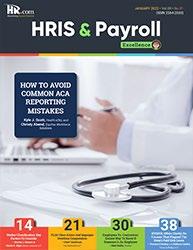
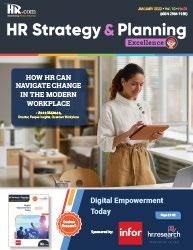
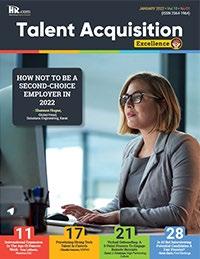
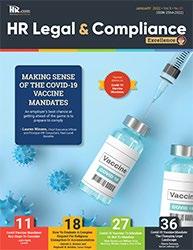




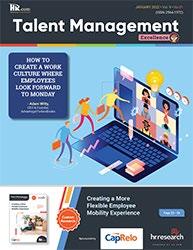
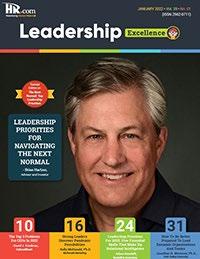
Reach Your Audience
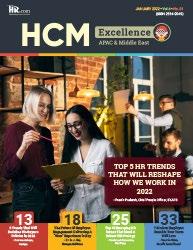
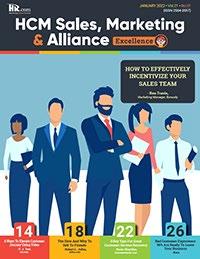

Like to submit an article? Use our online submission form or for more information go to www.hr.com/ExcellencePublications Publications 13 Targeted
to
Informing, Educating, Enlightening and Assisting HR professionals in their personal and professional development, the Excellence series offers high-quality content through the publications!
For more information: Phone: 1.877.472.6648 | Email: ePubeditors@hr.com | www.HR.com/epubs Workforce Management, Time & Attendance, Excellence October 2022




























































 From Labor Unions to Hybrid Work: Staying Compliant During America's Workforce Evolution
From Labor Unions to Hybrid Work: Staying Compliant During America's Workforce Evolution












 Linda Shaffer, Chief People Operations Officer, Checkr
Linda Shaffer, Chief People Operations Officer, Checkr



























 LEARN MORE
LEARN MORE
LEARN MORE
LEARN MORE
LEARN MORE
LEARN MORE
LEARN MORE
LEARN MORE
















